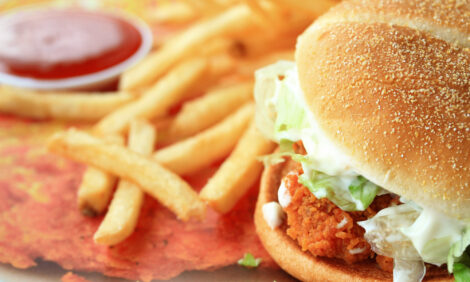



New research highlights the benefits of early photo stimulation on productivity
A new report has been published in Poultry Science which investigates the effects of dietary protein level and age at photo stimulation on the reproduction traits of broiler breeders and progeny performanceThe study was completed by researchers from Wageningen Livestock Research, and Evonik Nutrition and Care GmbH, Germany, and tested the effects of two dietary crude protein levels and two ages at photo stimulation on reproduction traits of broiler breeders and progeny performance.
The experiment
- 2 x 2 factorial arrangement.
- Broiler breeders: 480 female and 64 male Ross 308 breeders; 20 weeks of age.
- Two dietary crude protein levels: high (CPh) and low (CPl; 15 g/kg lower than CPh diet); supplemented with free amino acids (AA). Diets were isocaloric (had similar calorific value).
- Two ages at photo stimulation: early (21 weeks; PSe) and late (23 weeks; PSl)
Key findings
Diet
- Total egg production was similar between CPl and CPh birds during phase 1 and 2 but was reduced by 2.8 eggs for CPl birds during phase 3.
- For the overall laying period, CPl birds tended (P = 0.075) to produce 4.7 fewer total eggs.
- Hatchability of set eggs was similar between CPl and CPh birds during phases 1 and 2 but tended (P = 0.064) to be lower for CPl birds in phase 3.
Photo stimulation
- PSe birds showed an advanced age at sexual maturity and age at peak production of 4.6 and 5.3 d, respectively, resulting in 2.5 more total eggs during phase 1.
- During phase 1, PSe birds showed an almost 5% increased fertility.
- Chick production in phase 1 was higher for PSe birds resulting in a tendency (P = 0.071) to higher overall chick production of almost 8 chicks.
- Progeny from early PS breeders showed an overall significant lower feed conversion ratio (FCR).
Concluding remarks
Egg and chick production during phases 1 and 2 were not affected by dietary CP level, but egg and chick production was reduced for CPl birds during phase 3. However, PSe birds showed an increased number of chicks.
It is possible to decrease crude protein level of breeder diets with comparable reproduction from 22 to 46 weeks; however, this is questionable for phase 3. For maximal chick production, early photo stimulation is recommended.
R.A. van Emous, C.E. de la Cruz, V.D. Naranjo (2018). Effects of dietary protein level and age at photo stimulation on reproduction traits of broiler breeders and progeny performance. Poultry Science, 97(6):1968–1979.
Read the full article here









